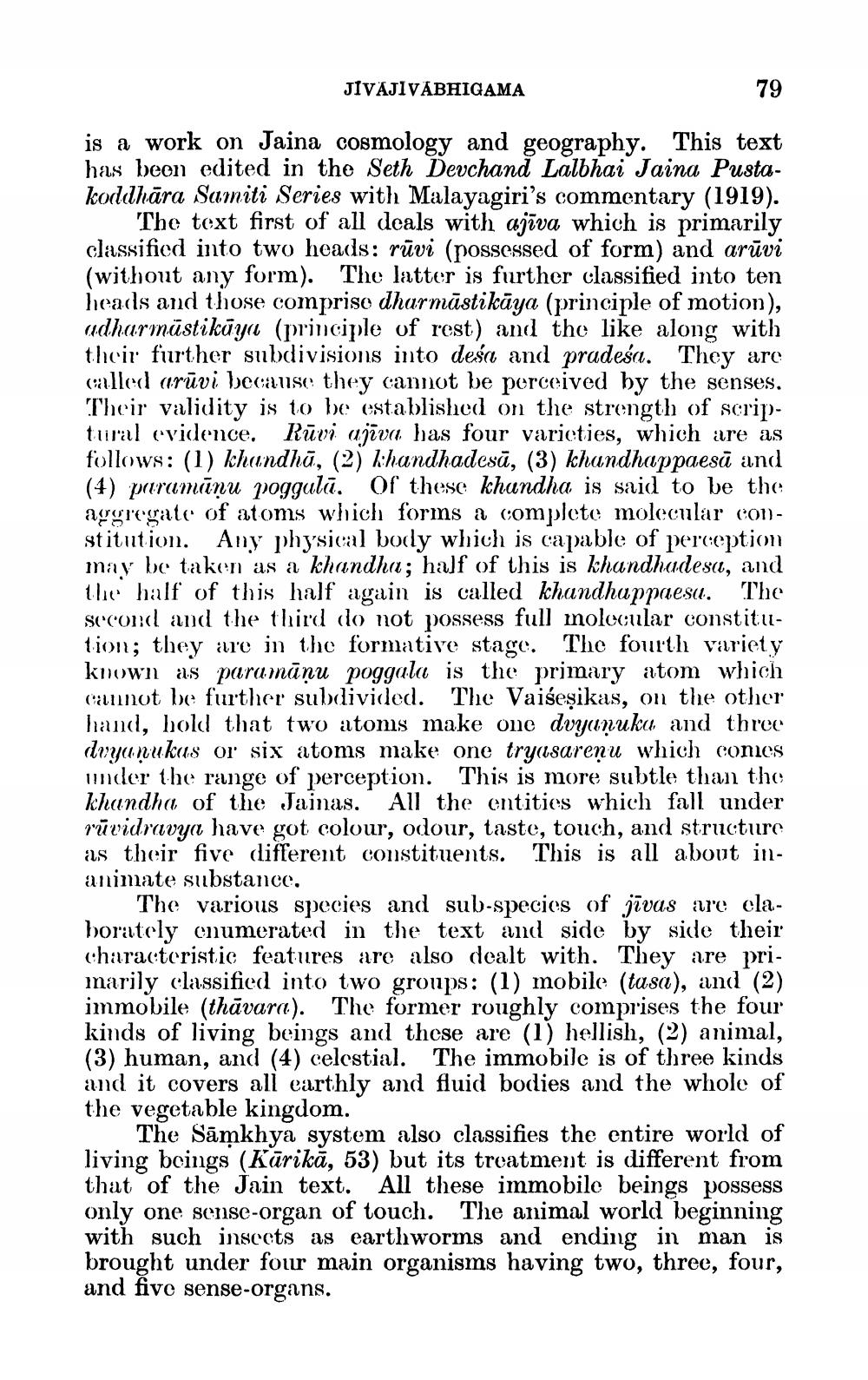________________
79
is a work on Jaina cosmology and geography. This text has been edited in the Seth Devchand Lalbhai Jaina Pustakoddhara Samiti Series with Malayagiri's commentary (1919).
The text first of all deals with ajiva which is primarily classified into two heads: rūvi (possessed of form) and arūvi (without any form). The latter is further classified into ten heads and those comprise dharmāstikāya (principle of motion), adharmästikāya (principle of rest) and the like along with their further subdivisions into desa and pradeśa. They are called aruvi because they cannot be perceived by the senses. Their validity is to be established on the strength of scriptural evidence. Ruvi ajiva has four varieties, which are as follows: (1) khandha, (2) khandhadesă, (3) khandhappaesā and (4) paramāņu poggalā. Of these khandha is said to be the aggregate of atoms which forms a complete molecular constitution. Any physical body which is capable of perception may be taken as a khandha; half of this is khandhadesa, and the half of this half again is called khandhappaesa. The second and the third do not possess full molecular constitution; they are in the formative stage. The fourth variety known as paramāņu poggala is the primary atom which cannot be further subdivided. The Vaiseṣikas, on the other hand, hold that two atoms make one dvyanuka and three dvyanukas or six atoms make one tryasarenu which comes under the range of perception. This is more subtle than the khandha of the Jainas. All the entities which fall under rūvidravya have got colour, odour, taste, touch, and structure as their five different constituents. This is all about inanimate substance.
JIVAJIVÄBHIGAMA
The various species and sub-species of jivas are elaborately enumerated in the text and side by side their characteristic features are also dealt with. They are primarily classified into two groups: (1) mobile (tasa), and (2) immobile (thavara). The former roughly comprises the four kinds of living beings and these are (1) hellish, (2) animal, (3) human, and (4) celestial. The immobile is of three kinds and it covers all earthly and fluid bodies and the whole of the vegetable kingdom.
The Samkhya system also classifies the entire world of living beings (Kārikā, 53) but its treatment is different from that of the Jain text. All these immobile beings possess only one sense-organ of touch. The animal world beginning with such insects as earthworms and ending in man is brought under four main organisms having two, three, four, and five sense-organs.




